The Human Eye
Key Notes:
Structure of the Human Eye:
- Cornea: The transparent, curved outer layer of the eye that helps focus light entering the eye.
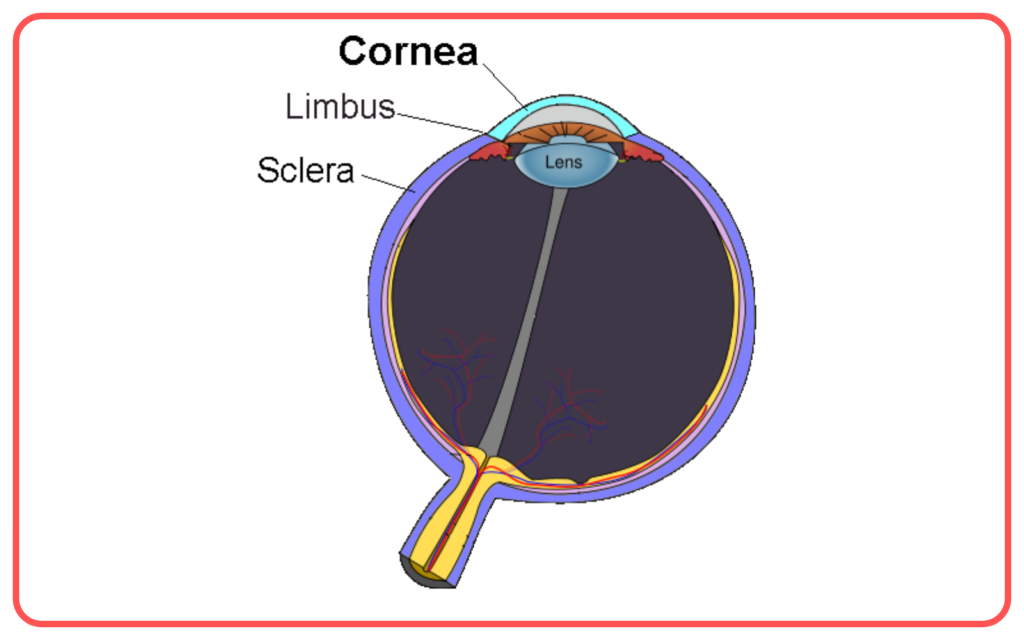
- Pupil: The black circular opening in the center of the iris that controls the amount of light entering the eye.
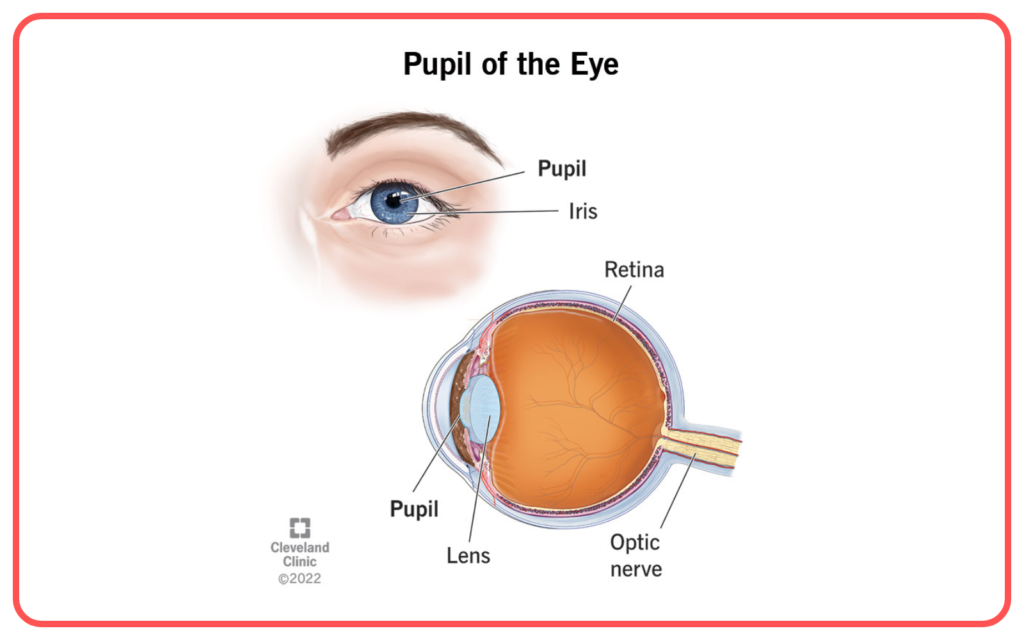
- Iris: The colored part of the eye that controls the size of the pupil, regulating the amount of light that enters.
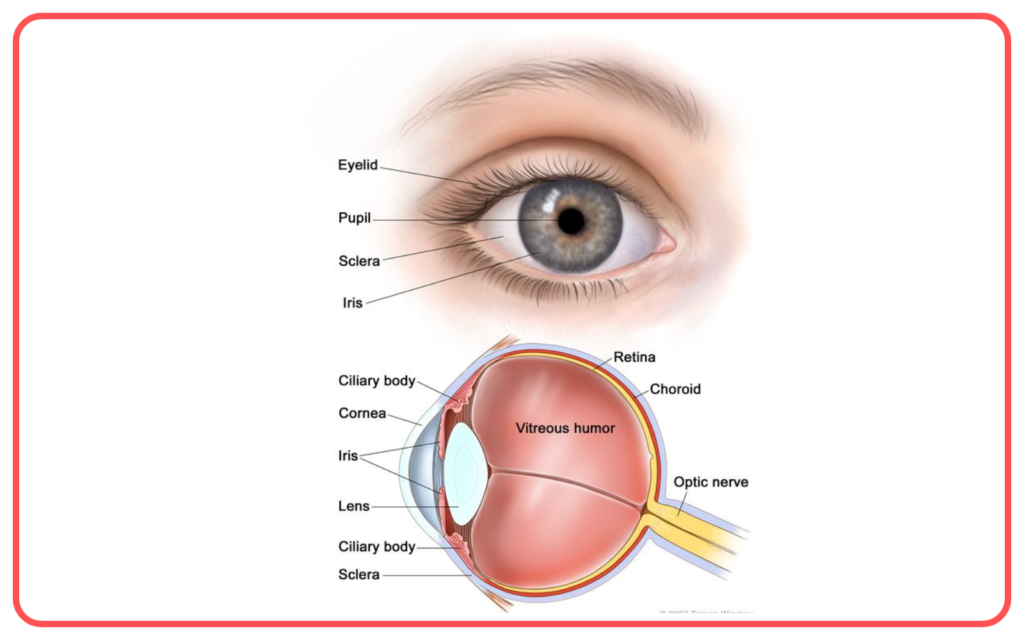
- Lens: A transparent, flexible, and convex structure that focuses light onto the retina.
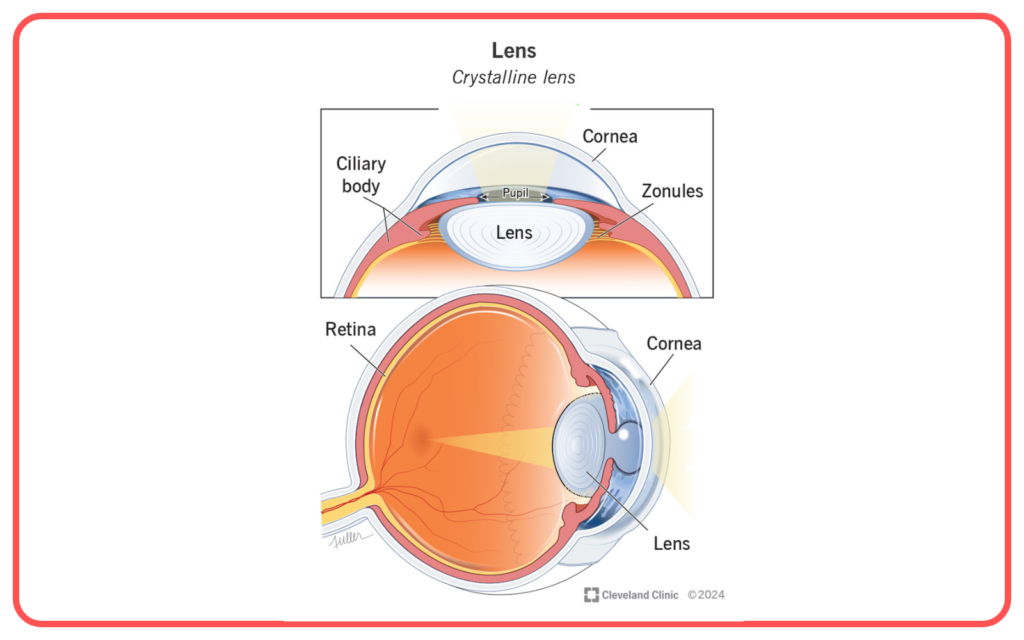
- Retina: The innermost layer of the eye, which contains light-sensitive cells (rods and cones) that convert light into electrical signals.
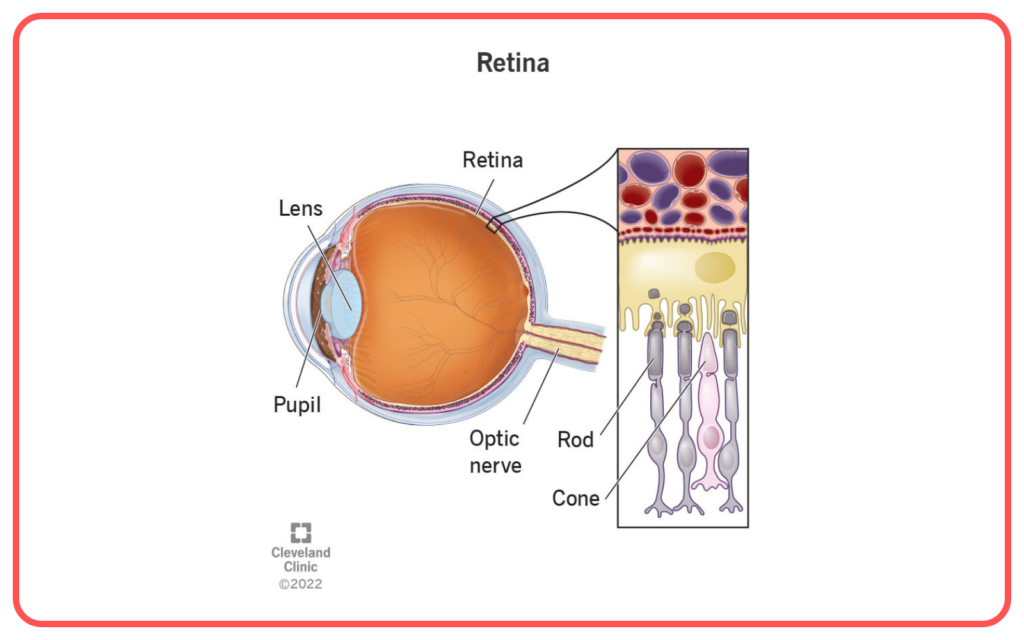
- Optic Nerve: The nerve that transmits electrical signals from the retina to the brain for visual processing.
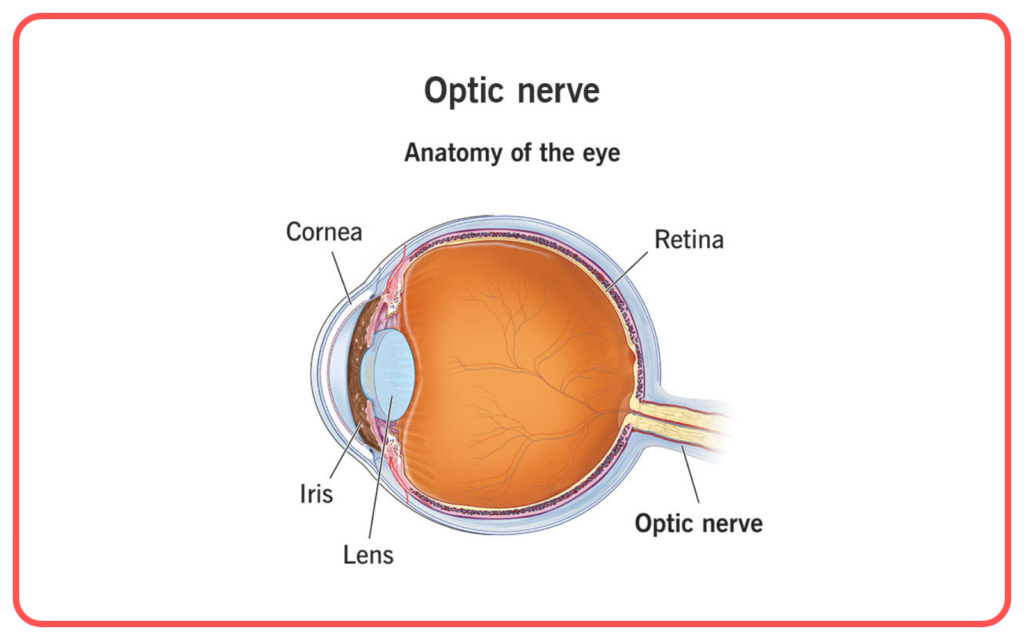
- Ciliary Muscles: Muscles that change the shape of the lens to focus on objects at different distances (accommodation).
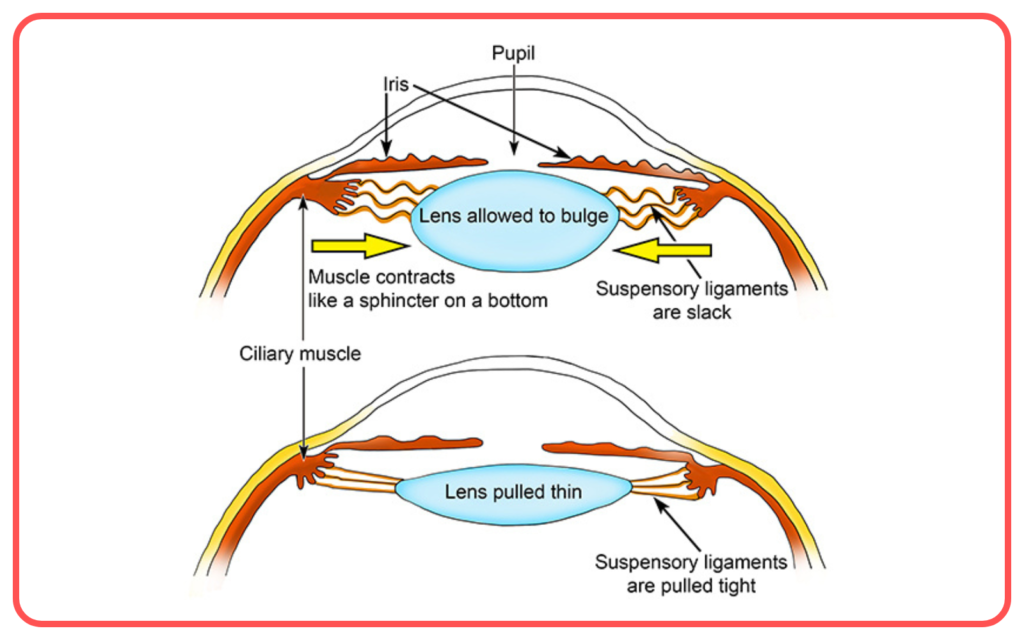
Function of the Eye:
- Light Entry: Light enters the eye through the cornea, then passes through the pupil (which adjusts based on light intensity).
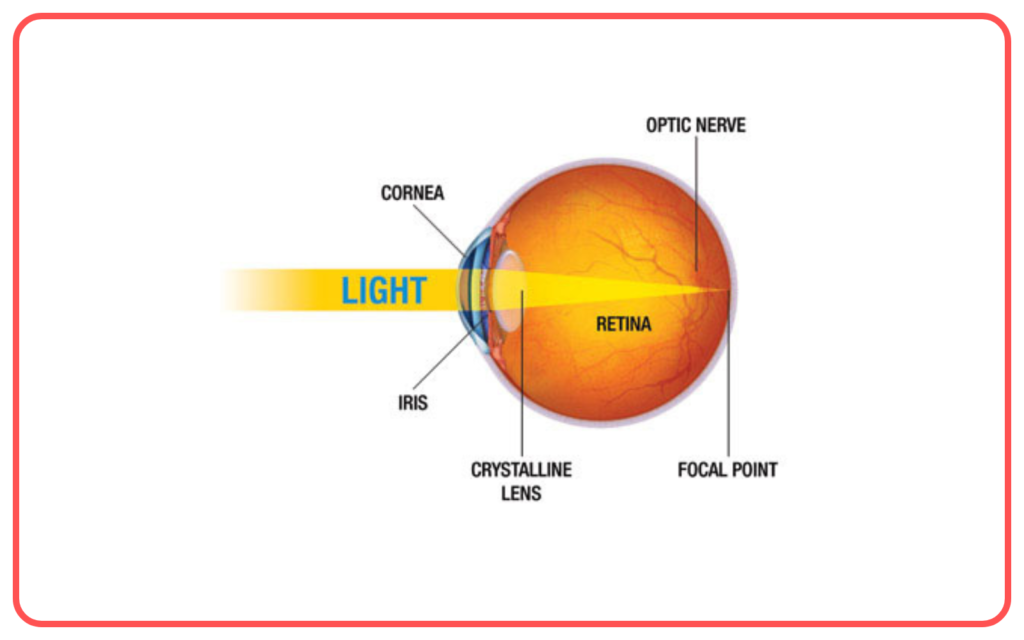
- Focusing: The lens focuses light on the retina. The lens changes shape with the help of the ciliary muscles to focus on near or distant objects.
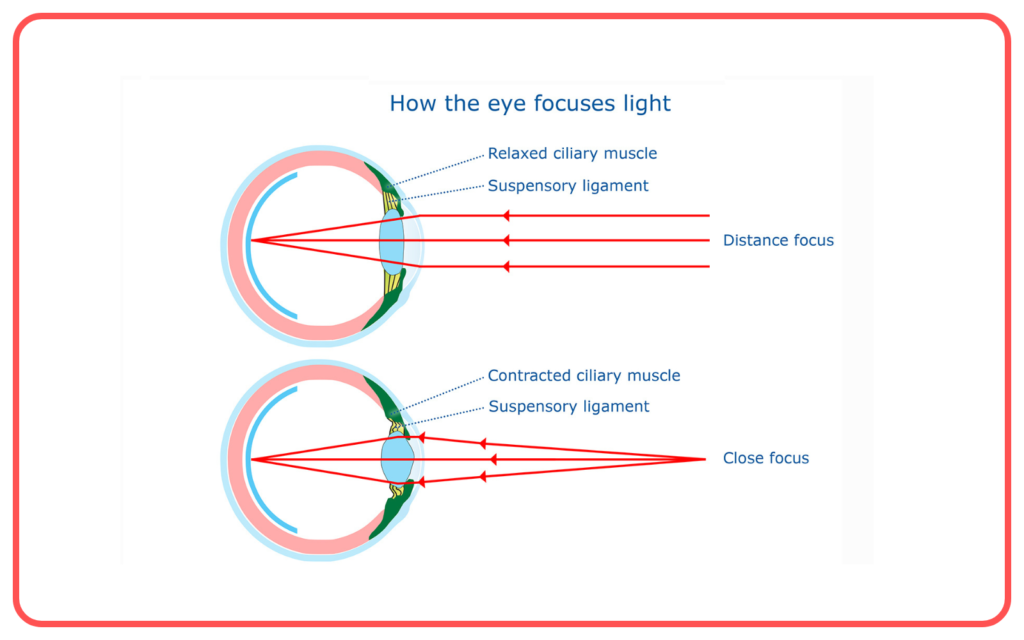
- Image Formation: The light-sensitive rods and cones in the retina convert light into electrical signals. Rods are responsible for low-light vision (night vision), while cones detect colors and are responsible for daytime vision.
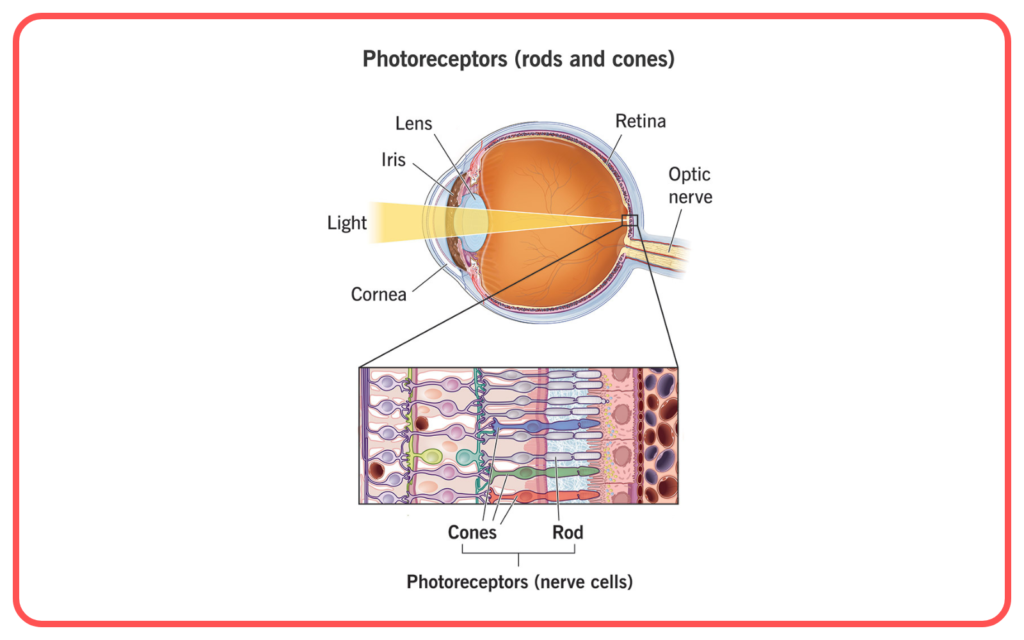
- Signal Transmission: These signals are sent to the brain via the optic nerve, where they are interpreted as images.
Accommodation:
- The process by which the eye changes the shape of the lens to focus on objects at different distances.
- When focusing on a near object, the ciliary muscles contract, causing the lens to become more curved (increasing its refractive power).
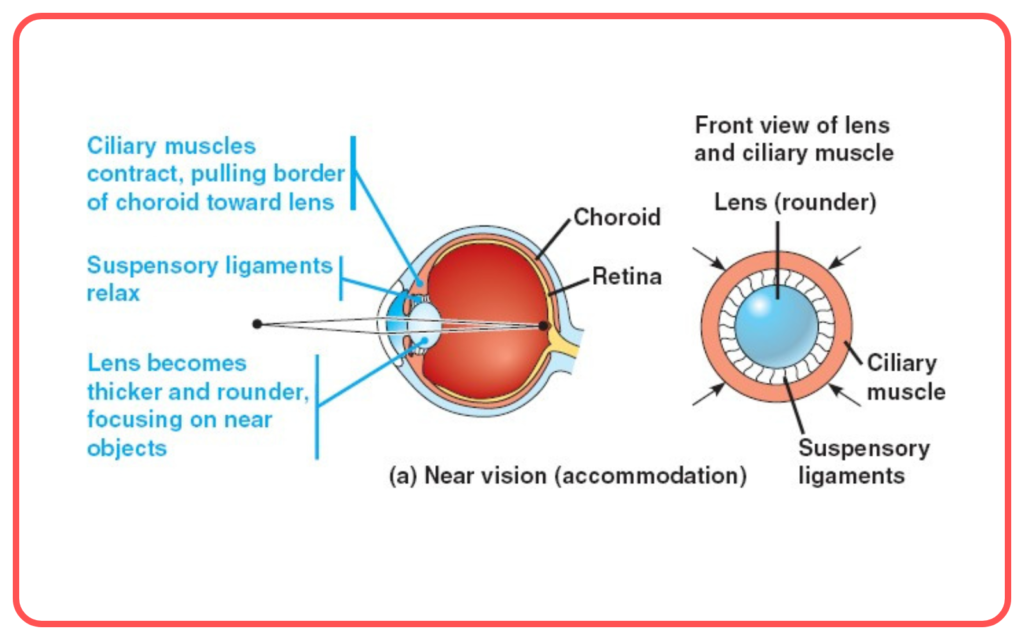
- When focusing on a distant object, the ciliary muscles relax, making the lens flatter (decreasing its refractive power).
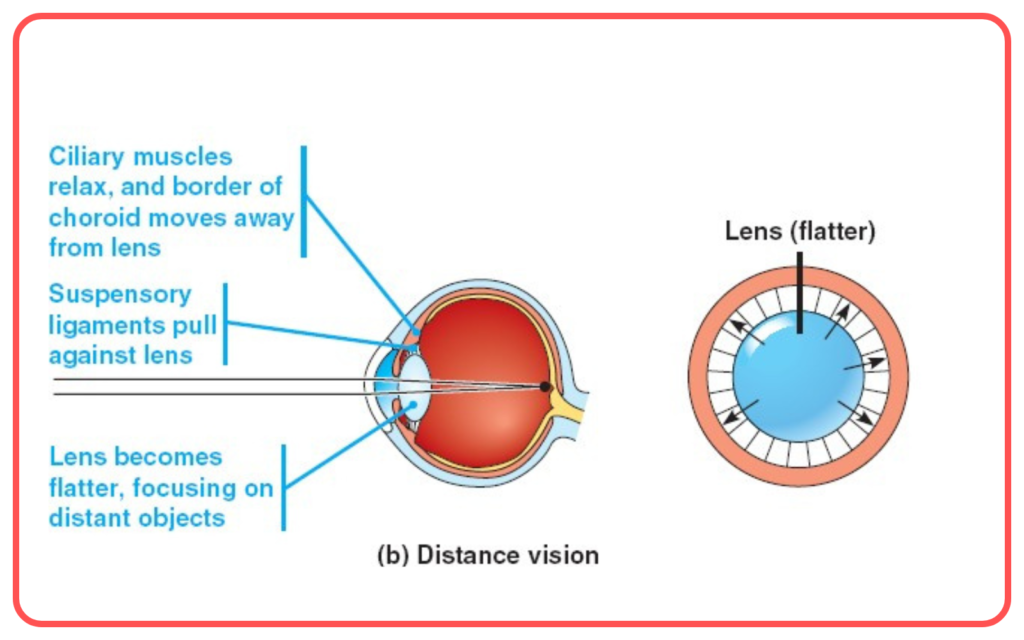
Defects of the Eye:
- Myopia (Nearsightedness): The inability to see distant objects clearly. It occurs when the eyeball is too long or the lens is too curved.
- Correction: Concave lenses are used to diverge light rays before they enter the eye.
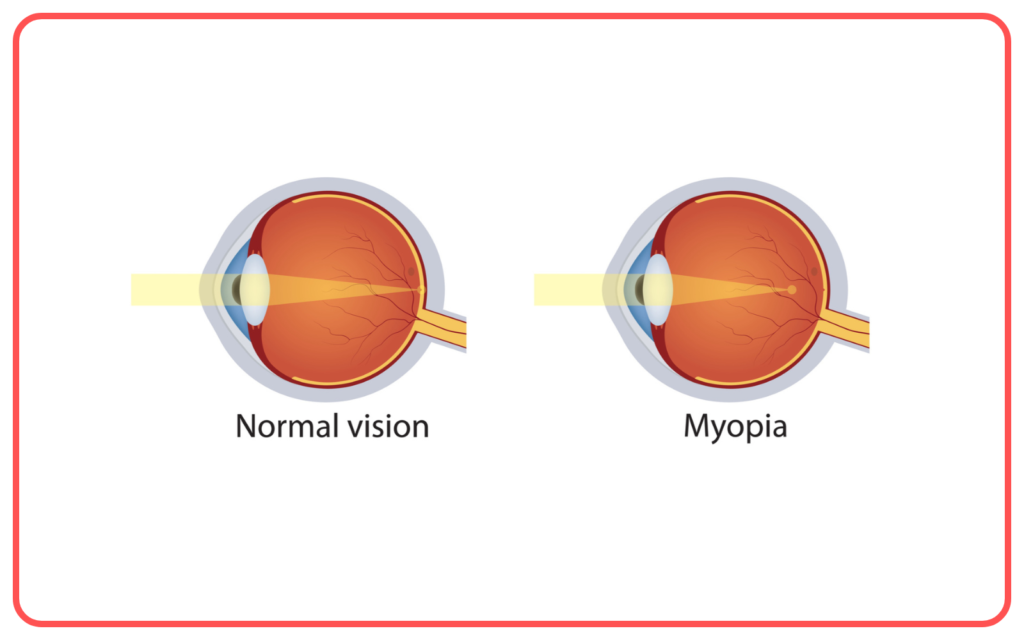
- Hypermetropia (Farsightedness): The inability to see nearby objects clearly. It occurs when the eyeball is too short or the lens is too flat.
- Correction: Convex lenses are used to converge light rays before they enter the eye.
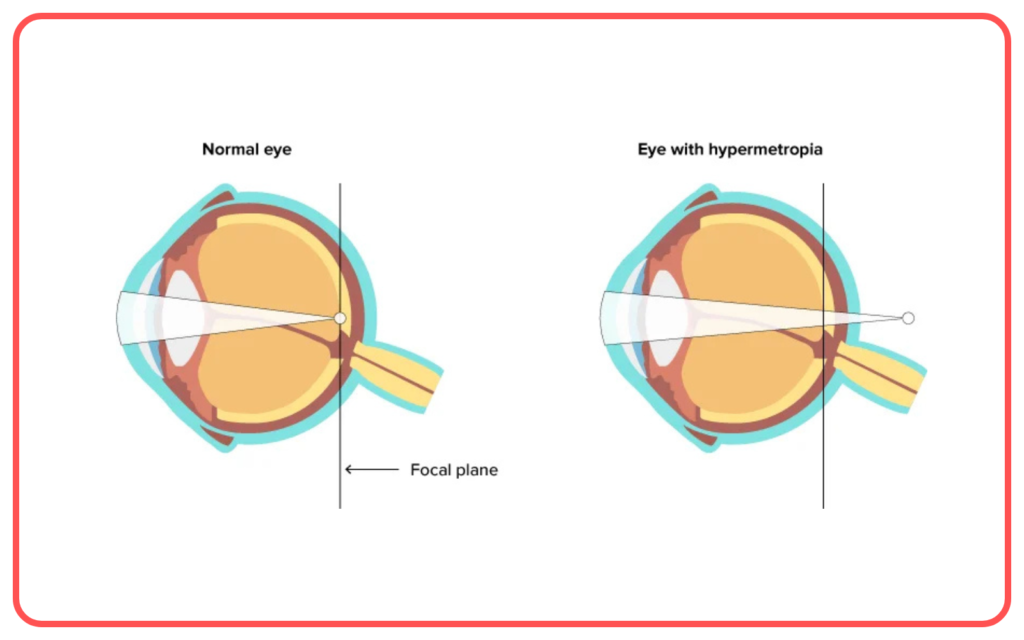
- Astigmatism: Distorted or blurred vision caused by an irregular shape of the cornea or lens.
- Correction: Cylindrical lenses are used to correct the uneven curvature.
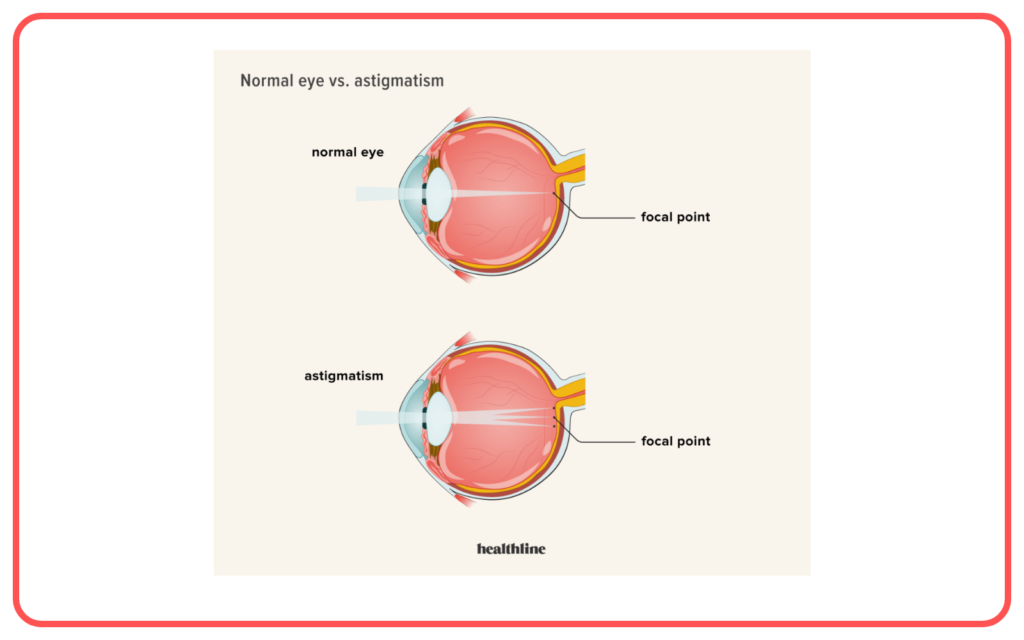
- Presbyopia: The age-related loss of the ability to focus on near objects due to the hardening of the lens.
- Correction: Bifocal or multifocal lenses.
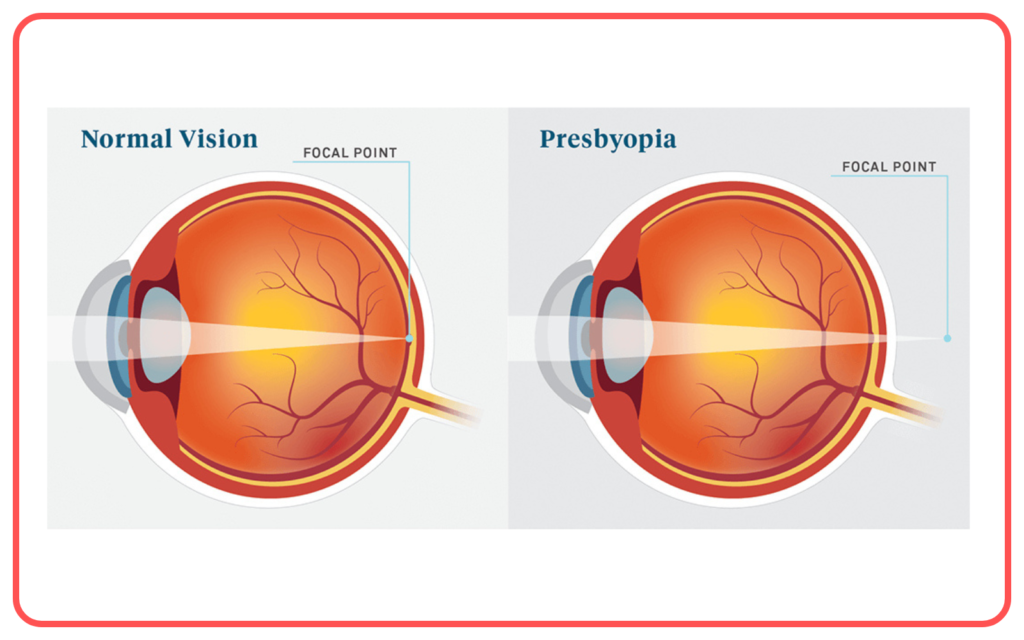
Color Vision:
- Cones in the retina are responsible for color vision. There are three types of cones sensitive to red, green, and blue light.
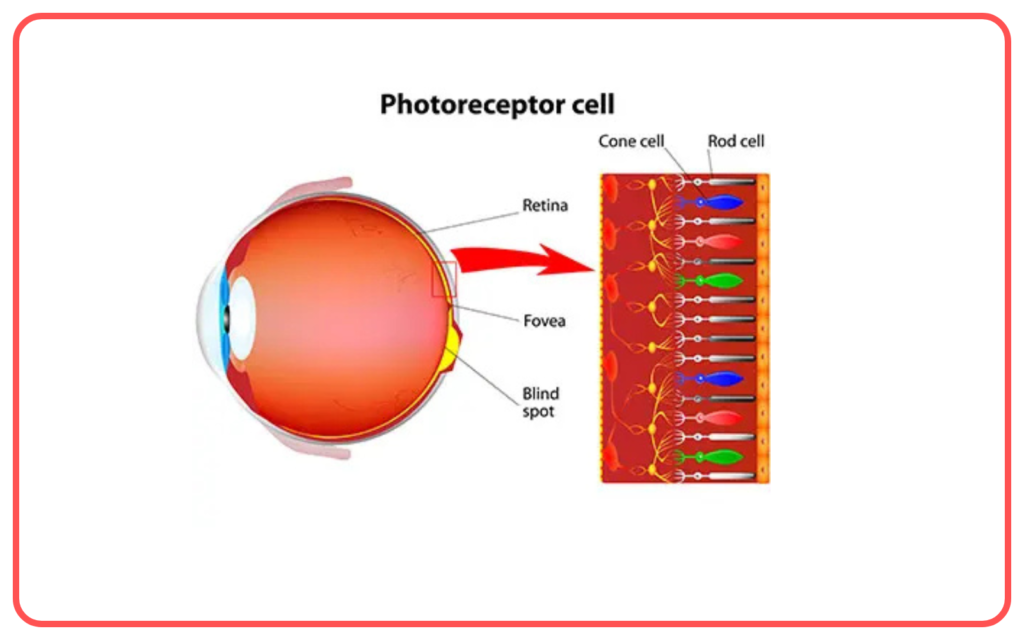
- Color Blindness: A condition where one or more types of cones are absent or non-functional, leading to the inability to distinguish certain colors (most commonly red and green).

Working of the Eye in Detail:
- Light enters the eye through the cornea and passes through the pupil.
- The amount of light entering is controlled by the iris (which adjusts the size of the pupil).
- The light is then focused by the lens onto the retina at the back of the eye.
- The retina contains rods (for black and white vision in low light) and cones (for color vision in bright light).
- These cells convert the light signals into electrical impulses, which are sent to the brain via the optic nerve.
- The brain interprets these impulses, and you perceive the image.
Protecting Your Eyes:
- Avoid staring directly at bright lights (like the sun or welding arcs) to prevent damage to the retina.

- Wear protective eyewear when working with harmful chemicals or machinery.

- Maintain good lighting and avoid prolonged exposure to screens (to prevent eye strain).
- Eat foods rich in Vitamin A (like carrots) to maintain good eye health.

Let’s Practise!

